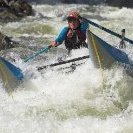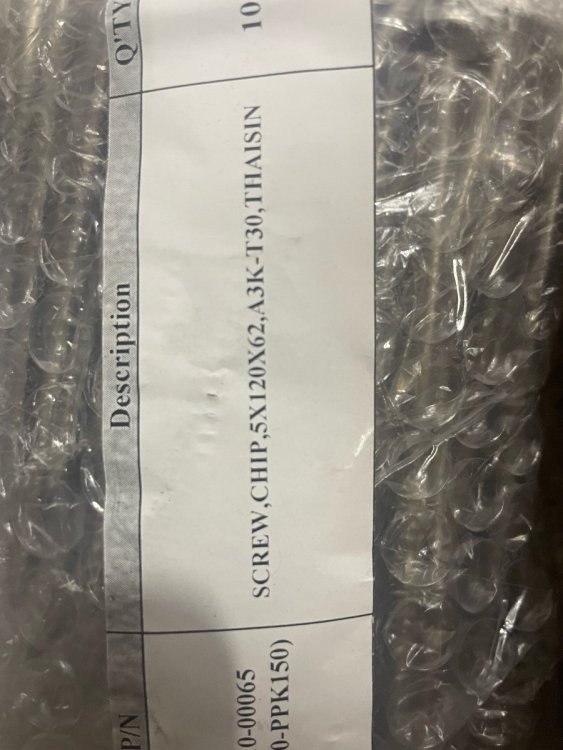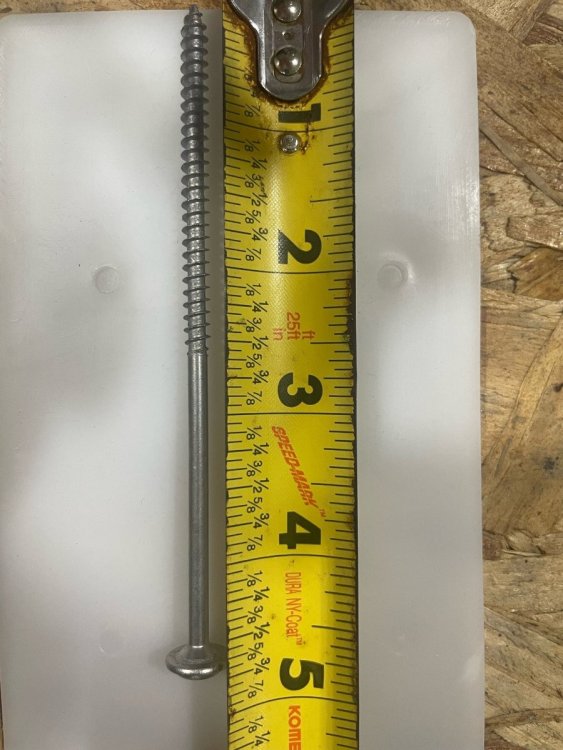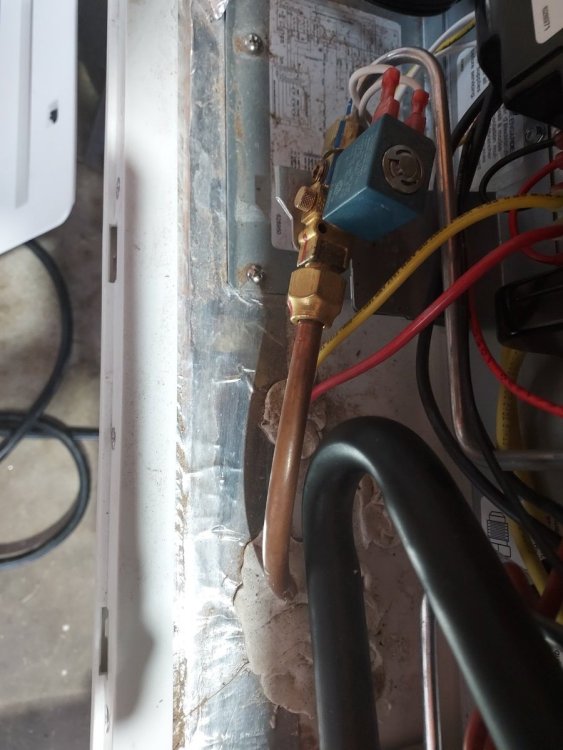-
Posts
923 -
Joined
-
Last visited
-
Days Won
18
Everything posted by Rivernerd
-
It depends on whether you consider ebay reputable. I have purchased from sellers with multiple 100% positive ratings before, with good results. The $66 price tag would interest me, compared to $124 from etrailer: https://www.ebay.com/itm/144977315480?chn=ps&_trkparms=ispr%3D1&amdata=enc%3A1LXuh-QgGSqeAryZhSSnfng90&norover=1&mkevt=1&mkrid=711-117182-37290-0&mkcid=2&mkscid=101&itemid=144977315480&targetid=1644837435723&device=c&mktype=&googleloc=9029558&poi=&campaignid=16743749222&mkgroupid=138744546207&rlsatarget=pla-1644837435723&abcId=9300842&merchantid=6296724&gclid=EAIaIQobChMIsNjQr5Po_QIVYAWtBh2ZbATpEAQYAiABEgIVePD_BwE
-
I find the standard tank heaters on the Cortes intriguing. Some folks would love to have those on Olivers. Oliver aggressively markets their products as "4-Season Travel Trailers," yet offers no tank heaters. Does anyone have experience with tank heaters? Are they 120V only? If so, not much help when on the road on below-freezing temps. If 12V, how large a battery bank is required to operate them?
-
What were your questions, and what were Mike's answers to them?
-
You have precisely described the leak we found in our Hull #1291 the day after delivery. When we took it back to Oliver, they also sealed the roof penetrations, which seems to have solved the leak issue. I wonder if Oliver has yet figured out that all screws that penetrate the roof must be sealed during manufacturing to avoid leaks from the Truma AC unit?
-
One of my concerns when opting for the Truma water heater, AC and furnace package in our Hull #1291 was service. I knew that Truma will sell repair parts only to "authorized" RV service centers, including the Oliver "Mothership." Living in the Idaho mountains, I do most of my own auto and RV repair work. I figured that in the event of a failure, if I can't get Truma parts, I can just replace the entire Truma unit with, for example, a Fogatti water heater or RecPro air conditioner. But, the way Truma "whipsawed" you by withdrawing the AC install offer after you had towed your Oliver 5 hours one way, takes customer disservice to an entirely new low. Thanks for posting about this outrage. Anyone considering anything Truma, beware!
-
My quick Google search suggested that your V6 Highlander should have at least 1485 lbs. of payload capacity. 4700 lbs. of Legacy Elite I will likely result in at least 470 lbs. of trailer tongue weight. That leaves about 1000 lbs. of payload capacity for 3 passengers+gear. IMHO, this is within the safe range as long as you are not carrying 3 NFL linemen. But, I would strongly recommend an Andersen weight distribution hitch.
-

Tail Number: TN 23-1351 Has Left the Hanger (an Air Force thing...)
Rivernerd replied to BBL's topic in Delivery Day Photos
Have you done a thorough inspection? How does the build quality compare to your former Airstream? -
Last November, I, too, looked forward to the opportunity to thoroughly inspect the build quality of our new Elite II. I found several issues while camping over a long weekend at David Crockett State Park. It took two work days, but they were all promptly addressed by the Oliver Service team once we returned the trailer to Hohenwald the following Monday. My report of that experience is detailed here: I am looking forward to your post-delivery report, given your experience and training. I expect I will learn things that enable me to address potential issues while our Elite II is at home with access to all of my tools, rather than out on the road.
-
I shared your concern, based on those same threads, until I took delivery of our 2022 Elite II, Hull #1291, last November. My inspection of the factory wiring, bus bars and other electrical components visible through the access ports and hatches in our trailer appears to me to be done with greater care, and often with higher quality components, than are shown in John Davies' photos from his 2017 Elite II. This suggests to me that Oliver has raised the production quality of the electrical installations in the interim. It made my feel a bit better about paying so much more in 2022 that Oliver was charging back in 2017! In fact, my impression upon inspection was that the electrical issues noted in John Davies' many posts appear to have been passed on to the "right" people at Oliver, and that they have since implemented needed improvements in component and production quality. Time will tell if our 2022 electrical system is less trouble prone than earlier models. Ollie-Haus, I hope you are pleasantly surprised by the quality of the electrical components and work in your 2023. As you are obviously more knowledgeable about such things than I am, I look forward to reading your observations following delivery!
-
When sizing tow vehicles to trailers, the issue is not just how fast you can pull the trailer up a steep hill. It is overall control, particularly in emergency situations. Undersized tow vehicles have smaller braking systems, which can make the difference between an accident and a near miss. On the road, I steer clear of big trailers which appear to me to be hitched to undersized tow vehicles, for that very reason. Then there is the legal liability issue. This Motor Trend article is instructive: https://www.motortrend.com/features/1703-tow-ratings-and-the-law-discussing-limits-of-trailer-size/
-
Oliver does not recommend blowing out the water system with compressed air. Instead, Oliver recommends winterizing with RV antifreeze. That is what I would do, following Oliver's winterizing video:
-
Yes, since we returned home from Hohenwald last November. It will not be out in the weather until mid-April, when we will be camping on the Oregon coast. That could be a good test for the roof.
-
I have no idea. I have not had a reason to examine the installation of our Truma AC unit because we have had no leaks since the Oliver Service team re-sealed the roof penetrations back in November. I note that Oliver installs many things to the fiberglass hull using wood screws, like the portholes. Maybe the 5mmx120mm wood screws go through the outside housing of the Truma AC, screw into holes in the inside housing, and thus draw the two housings together, sandwiching the hulls between them? I plan to figure out how it works if and when a problem arises. But, if your experience educates you about how it all goes together, please share!
-
rich.dev: FYI, you should not need the longer screws. Your 2023 Elite II scheduled for delivery in mid-May will have the longer screws already installed. The short screws were only used for the first few Truma AC units installed back in 2022.
-
They are 5mmx120mm T30 flathead wood screws. Photo below shows the bag they come in. Next photo shows the length in inches. A Google search so far has revealed no sources for 5mmx120mm wood screws. But, the approximate size in Imperial screws is #10x5". Those are readily available in the USA. I figure if I have to address a leak around my Truma AC unit, I will buy some #10x5" screws and carefully try them. I do wish that Truma would not be so compulsive about providing repair parts only to authorized service centers. I believe I am more capable, and careful, than most "knuckle draggers" employed by RV service centers these days, particularly in consultation with the excellent Oliver service team...
-
John: We had a roof leak in the area of the Truma AC unit the night after we took delivery of Hull #1291, the second Elite II to have a Truma AC installed. We found the leak after towing it to David Crockett State Park in Lawrenceburg, TN. We reported the leak to the Oliver Service staff the following Monday, when we returned to Hohenwald for repairs. They resealed all roof penetrations, which seemed to solve the leak issue. We drove through a couple of snow and rain storms on our way home to Idaho, and found no further leakage. It concerns me that there is no reported "foam seal" between the Truma AC unit and the fiberglass roof on your Hull #1290. Notably, I have learned that Truma is now providing longer installation screws for the AC units to Oliver than the ones that were supplied with the early units. I recommend you submit a ticket to Oliver Service requesting that the longer installation screws be sent to your RV service center so your Truma AC unit can be re-installed with those longer screws, and then resealed. I asked Oliver service to send to me a set of the longer installation screws, should I need them if later leaks appear. I was advised that Truma will allow Oliver to send repair parts only to authorized RV service centers. As a workaround, I asked Oliver Service to email to me a photo of the longer screws, with a description of dimensions and thread pitch, so I can source similar screws elsewhere (like Tacoma Screw). I like to be prepared. I look forward to your report on how the leak issue with Hull #1290 gets resolved, including whether a foam or butyl seal gets installed between the Truma AC unit and the roof!
-
Good choice of tow vehicles with your 2022 Tundra. It has about 500 lbs. greater payload capacity than our 2019 Tundra, which is still adequate to tow our Hull #1291. We are getting along fine, but that extra 500 lbs. of payload will be nice to have.
-

Winter Camping for the season in New Hampshire
Rivernerd replied to In Pursuit's topic in Submit Your Story
The biggest concern that keeps me from towing our Elite II during the winter is road safety. I have towed my much lighter raft trailer on snowy roads a couple of times, with sometimes scary results. No accidents, but some close calls. So, I gave up towing it until the roads are no longer snow-covered or icy in the spring. Have any of you more veteran Oliver owners experienced loss of traction, fishtailing or loss of control on snow-covered roads? Any issues climbing hills on snow-covered roads while towing an Elite II? -
Even with Nev-R-Lube bearing cartridges installed (which we also have on our Hull #1291), it is still a good practice to check hub temperature at gas stops. Nev-R-Lube cartridges do sometimes fail. I use a Klein infrared gun. If one hub is consistently hotter than others, I know I have a problem that must be checked out sooner rather than later.
-
Definitely submit a service ticket. Your photo shows sloppy installation, of which the Oliver Service Department should be advised. That said, there should be a round access port cover, on the forward end of the street side overhead cabinet just aft of that Zamp charge controller, which will allow you to access the back of that mounting area. With such access, you should be able to swap the left-side screw visible in your photo for a bolt with nut.
-
John Dehne: Thanks for the "heads up," with photo, demonstrating the potential for physical contact between the propane line and the black hot gas line on the Norcold absorption fridge. I checked the Norcold fridge on our Hull #1291. Fortunately, ours was installed with more horizontal space between the copper propane line and the black hot gas line. There is enough clearance that, even when wiggled, the two lines cannot contact each other. I recommend that each owner of a Norcold absorption fridge double-check this clearance issue, and address any conflict like you did, by inserting some kind of pliable insulator between them. Good catch!
-
These suggestions are not specific to the Legacy Elite, but are relatively easy to implement and sometimes overlooked. 1. Do you have the Truma water heater? Does it include the antifreeze kit? If so, be sure to install the antifreeze filter before leaving home, and switch the Truma control over to antifreeze mode during daytime driving. When parked, keep the Truma water heater on Comfort mode, which will burn more propane, but will provide an additional margin of safety from freezing. 2. Also, remove the shower head from the outside wash station, pull the shower hose inside the trailer, re-install the shower head inside the hull, and place the head/hose assembly inboard from the hull. As this is an area that gets little heat from the furnace, I would also place a couple of layers of Reflectix-type insulation along the inside of the hull where that outside wash station is installed.
-

Surge protector "clunk"..no 120
Rivernerd replied to Gliddenwoods's topic in Mechanical & Technical Tips
Below is a link to a $34 unit that will check post wiring and provide some surge protection. When added to the high-quality internal surge protector already installed in the Oliver, this should be adequate: https://www.amazon.com/Protector-EyGde-Indicator-Protection-Extension/dp/B09HR15F2Y/ref=asc_df_B09HR15F2Y/?tag=hyprod-20&linkCode=df0&hvadid=563658249300&hvpos=&hvnetw=g&hvrand=7940290766815897406&hvpone=&hvptwo=&hvqmt=&hvdev=c&hvdvcmdl=&hvlocint=&hvlocphy=9029558&hvtargid=pla-1642769687496&th=1






